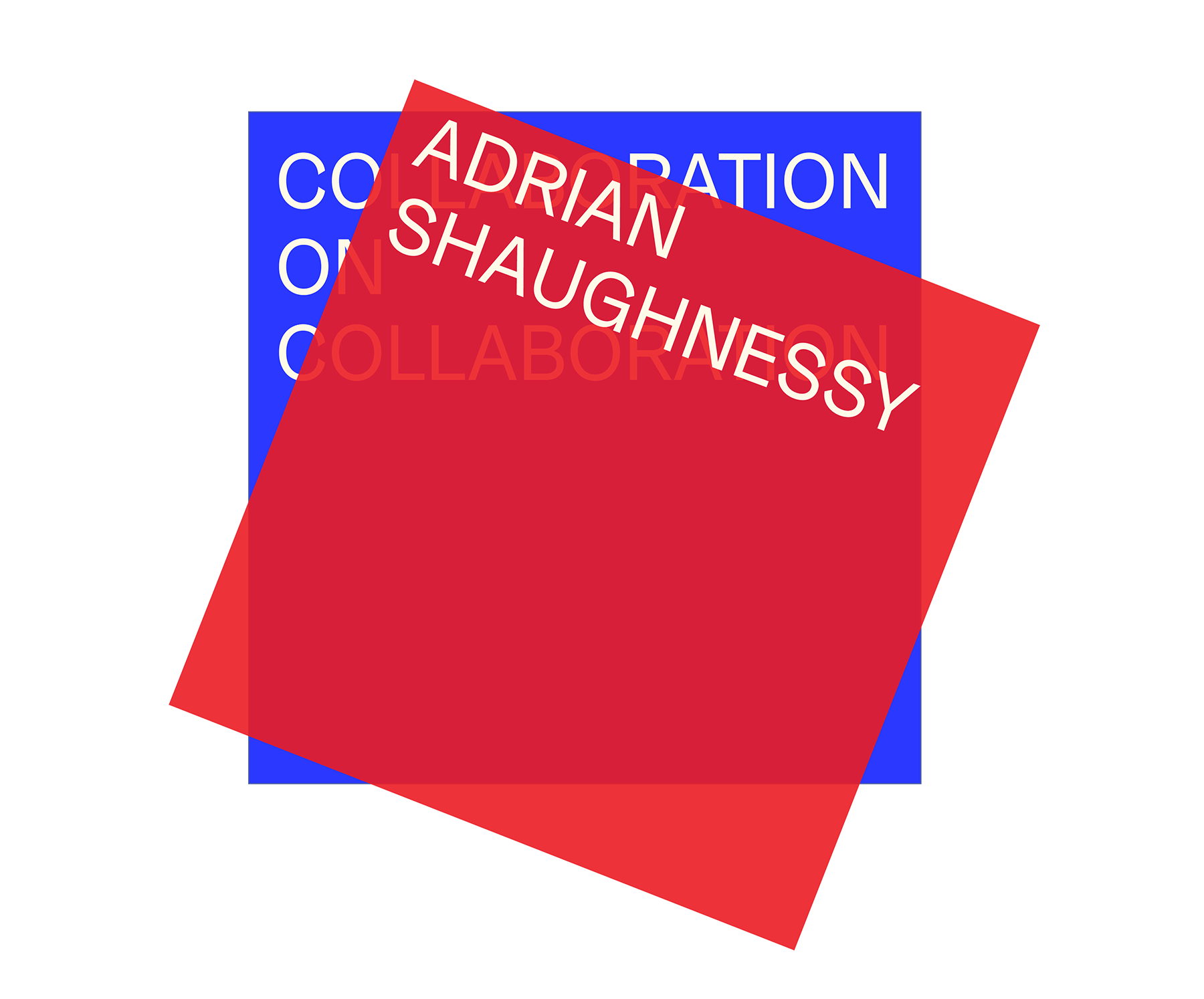


 February 5th, 2020
February 5th, 2020
 4:41 min read
4:41 min read  1289 words
1289 words
This column showcases a variety of positions on collaboration.
We asked people who we loved and hated collaborating with in the past, people we are collaborating with now, and people we hope to collaborate with in the future to respond to the same question: What is collaboration to you?
Each writer will build up and respond to the others’ perspectives through their personal experiences.
We hope you enjoy the series.
– Betty Brunfaut and Bakhtawer Haider
“… before the art of creation can be accomplished, some marriage of opposites has to be consummated.” — Virginia Woolf
I was first attracted to a career in graphic design by the allure of authorship. I wanted to make published artefacts for which I could claim personal responsibility. Perhaps this is the reason why so many people choose, or crave, the creative life. It’s a hungry plea for individual recognition in an impersonal and indifferent universe.
But as the educational theorist Etienne Werger, best known for his work on communities of practice, notes: “Today’s complex problem solving requires multiple perspectives. The Leonardo da Vinci days are over.” And it’s true that in recent years I’ve found myself drifting away from the idea of a craft populated by da Vinci’s, and come to regard the practice of design (except in rarefied situations) as an almost wholly collaborative activity.
The case for the benefits of collaborative creative production is strong. Persuasive examples can be found everywhere. Take this by Simpsons’ producer Joel H. Cohen: “Every day, if I say 100 things, 93 of them aren’t going anywhere. But there’s always a little piece that might inspire someone else. Very rarely does something go right into the script without any improvement from someone else.”
This text is written on the day that four artist have shared the Turner prize. Normally given to a single artist, the 2019 award went to four individuals after they made a plea for judges to recognise the causes of “commonality, multiplicity and solidarity”. Not quite the same as collaboration as all four make individual work, but a sign that individualism is under scrutiny even in art.
In many fields of design it no longer seems possible or even desirable to be a soloist. If you want to function as a creative practitioner, you need to learn the dynamics of ensemble performance. Paradoxically, this comes at a time when digital technology allows us to function in isolation as never before. And while it is possible to make things as a soloist, it is no longer possible to design solutions to “complex problems” in splendid isolation. Graphic design production increasingly requires a breadth of understanding that is beyond the single or discipline-specific practitioner, and is more and more the product of interdisciplinary collaboration.
This mode of working produces “collaborative intelligence,” a term that describes heterogeneous networks of people interacting to produce creatively supercharged outcomes. In other words, it’s the collaboration of opposites that produces the best results; groups of people with vastly different views and skills combining to produce unpredictable outcomes.
This is not easy. Many things conspire to make cross-disciplinary collaboration difficult. For a start, design history comes with an inbuilt bias towards the heroic individual. This is reinforced by an art and design education system that insists on individual assessments: a system that is training graduates for a world that no longer exist.
For three years, I ran a project-based elective for my students (actually, I don’t run it, I co-run it, but there you see the instinct for self-authorship at work!) The elective sought to harness the frequently expressed desire of students to learn how to work collaboratively, and to assist them in establishing cross-disciplinary modes of working.
We began as a homogenous group of graphic designers. For some students it was a highly satisfying and productive mode of working. Yet it soon became apparent that collaboration meant different things to different people. For some, working in groups was an opportunity to avoid the searchlight of scrutiny—you can hide in groups! For others it meant a painful loss of individual expression. And for yet others it was the realisation that not everyone contributes equally, a fact that ignited tense conversations about leadership, hierarchies, and the division of roles in creative practice.
Yet it was only when we moved to a project with participants from two other disciplines (in one case, vehicle designers and textile designers), that the true benefits of collaborative working emerged. This was because the students discovered that to collaborate with people from different disciplines, with different perspectives and different methodologies, a much higher level of personal reflection was required.
When these divergent modes of practice came together, the work was far more impressive than if more homogenous groups had undertaken it. It’s oppositional thinking rather than harmonious thinking that produces the unexpected. As Virginia Woolf observed: “… before the art of creation can be accomplished, some marriage of opposites has to be consummated.”
– Adrian Shaughnessy
An edited version of this post first appeared on Design Observer.